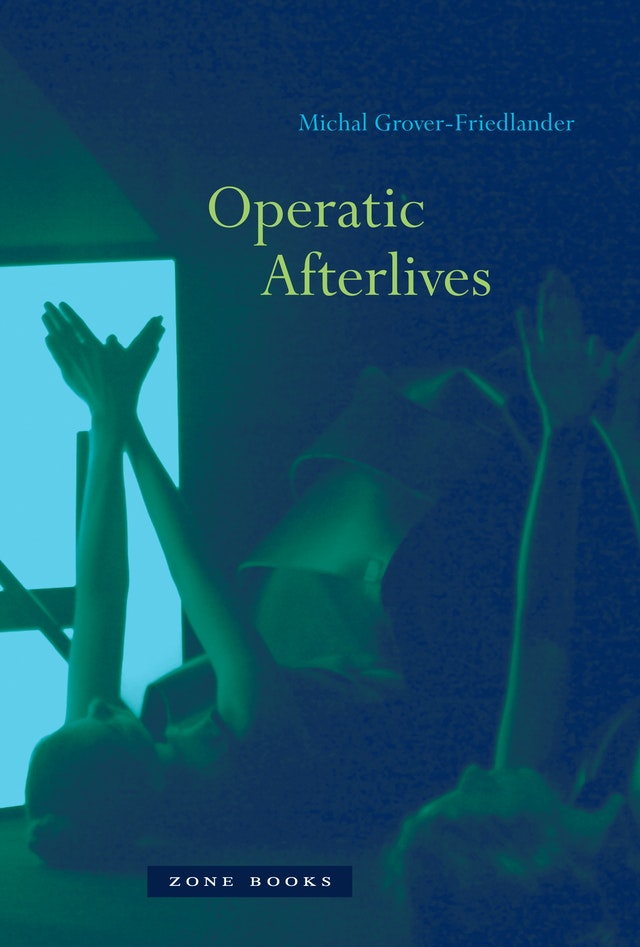
TRILITERAL LLC - 579012
Clearance: Operatic Afterlives
Author: Michal Grover-Friedlander
Publisher: Zone Books
Quantity:
Pickup available at Juilliard Store
Usually ready in 4 hours
Clearance: Operatic Afterlives
Juilliard Store
Pickup available, usually ready in 4 hours
144 West 66th Street
New York NY 10023
United States
Choose options
Quantity:
Pickup available at Juilliard Store
Usually ready in 4 hours
Clearance: Operatic Afterlives
Juilliard Store
Pickup available, usually ready in 4 hours
144 West 66th Street
New York NY 10023
United States
Quantity:
Pickup available at Juilliard Store
Usually ready in 4 hours
Clearance: Operatic Afterlives
Juilliard Store
Pickup available, usually ready in 4 hours
144 West 66th Street
New York NY 10023
United States
In Operatic Afterlives, Michal Grover-Friedlander examines the implications of opera’s founding myth ― the story of Orpheus and Eurydice: Orpheus’s attempt to revive the dead Eurydice with the power of singing. Traditionally, opera kills its protagonists that best embody its ideal of the singing voice, but Grover-Friedlander argues that opera at times also represents the ways that the voice, singing, or song acquire their own forms of aliveness and indestructibility. Operatic Afterlives shows the ultimate power that opera grants to singing: the reversal of death.
Grover-Friedlander examines instances in which opera portrays an existence beyond death, a revival of the dead, or a simultaneous presence of life and death. These portrayals ― from Puccini’s Gianni Schicchi to Rocca’s Il dibuk, from Seter’s Tikkun Hatsot to Ching’s Buoso’s Ghost, from Zeffirelli’s Callas Forever to Disney’s The Whale Who Wanted to Sing at the Met ― are made possible, she argues, by the unique treatment of voice in the works in question: the occurrence of a breach in which singing itself takes on an afterlife in the face of the character’s death. This may arise from the multiplication of singing voices inhabiting the same body, from disembodied singing, from the merging of singing voices, from the disconnection of voice and character.
The instances developed in the book take on added significance as they describe a reconfiguration of operatic singing itself. Singing reigns over text, musical language, and dramatic characterization. The notion of the afterlife of singing reveals the singularity of the voice in opera, and how much it differs categorically from any other elaboration of the voice. Grover-Friedlander’s examples reflect on the meanings of the operatic voice as well as on our sense of its resonating, unending, and haunting presence.
Grover-Friedlander examines instances in which opera portrays an existence beyond death, a revival of the dead, or a simultaneous presence of life and death. These portrayals ― from Puccini’s Gianni Schicchi to Rocca’s Il dibuk, from Seter’s Tikkun Hatsot to Ching’s Buoso’s Ghost, from Zeffirelli’s Callas Forever to Disney’s The Whale Who Wanted to Sing at the Met ― are made possible, she argues, by the unique treatment of voice in the works in question: the occurrence of a breach in which singing itself takes on an afterlife in the face of the character’s death. This may arise from the multiplication of singing voices inhabiting the same body, from disembodied singing, from the merging of singing voices, from the disconnection of voice and character.
The instances developed in the book take on added significance as they describe a reconfiguration of operatic singing itself. Singing reigns over text, musical language, and dramatic characterization. The notion of the afterlife of singing reveals the singularity of the voice in opera, and how much it differs categorically from any other elaboration of the voice. Grover-Friedlander’s examples reflect on the meanings of the operatic voice as well as on our sense of its resonating, unending, and haunting presence.
